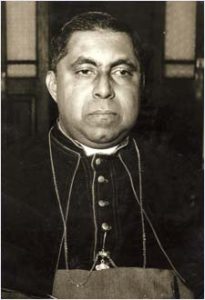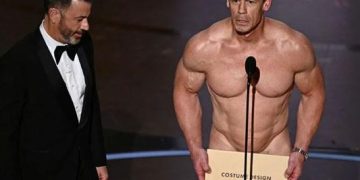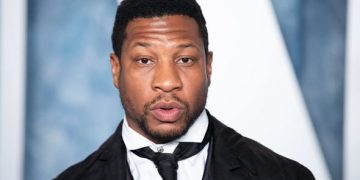By Rev.Dr.Oswald Gomis, Archbishop Emeritus of Colombo
Colombo, February 4 (Daily News): It is a misconception among many that the Christian community in Sri Lanka was more in favor of continuing the colonial regime that winning national Independence. Many persons, including most Christians including Catholics, believe this to be true. However, this is ignorance of fact. The fact is that the Christian community in the island has been in the forefront of the battle to win freedom for Sri Lanka.
It is historical fact that the Ceylon National Congress led the struggle for National Independence successfully winning freedom from British colonial rule. The leaders of the Congress were the prime movers in this regard.
The history of the Ceylon National Congress is interesting. The first Sinhala president of the Congress was Sir James Peiris, a Christian.
He succeeded its first president Ponnambalam. Arunachalam, a Tamil. One of the first two Joint-Secretaries appointed for the very first year of the Congress 1919-1920 was E. T. de Silva, a devout Catholic. He was also its first Treasurer.
All the office-bearers, except one, of the second year of the Congress (1921) happened to be Christians.
When the Constitution of the then State Council was amended the native who contested the elections in 1921 to represent the whole of Sri Lanka (then Ceylon) in the State Council, was Sir Marcus Fernando, a Catholic.
The 22nd Annual Session of the Ceylon National Congress was the most significant. After years of agitation and negotiation, it was here that the Congress took its final decision to demand full and complete Independence for Ceylon. This Session was held at the Sri Dharmaloka Vidyalaya in Kelaniya from December 18 to 20, 1942. The meeting was presided over by P. D. S. Kularatne a well-known educationist and Buddhist leader.

Free independence nation
Long drawn discussions took place as to what the Congress should demand from the ruling British. Various proposals were made and most of these were to make a cautious bid for power and proceed step by step finally towards total freedom. Dominion Status for Ceylon was one of the most popular proposals. This was mostly the cautious attitude of the seniors of the Congress. At this stage a group of junior members began losing patience.
Becoming impatient, the young member J. R. Jayewardane (later first Executive President of Sri Lanka) sprang up and made the formal proposal as a resolution that we should demand total independence and nothing less to be a free independence nation. The proposal was forthwith seconded by another junior, the eminent Catholic lawyer Dr. Joseph A.L. Cooray springing up from his seat.
Some seniors including D. S. Senanayake saw this as a disaster. They argued that by trying to get everything in one package, we may get nothing. However, the resolution was adopted by a majority vote. D. S. Senanayake who was earlier irked too, met with the fiery youngsters later and expressed his total approval. This marked the initiation of the great demand that won total Independence for Ceylon.
Incidentally, all the meals and other refreshments for the participants were supplied by the Catholic St. Paul’s School, a branch at the time of St. Joseph’s College, Colombo 10. (Ref: Records of the Ceylon National Congress – Michael Roberts-Volume II – pg 1486).
The 23rd Annual Session of the Ceylon National Congress was similarly important. It was held in Nainamadama (Dummaladeniya) in the North Western Province. This was almost a one hundred per cent Catholic village. The Organising Committee for the meeting was headed by D. Peter Perera, a Catholic leader of the place. The Bishop of Chilaw at the time the Rt. Rev. Dr. Edmund Peiris OMI attended the Sessions. Being a Sinhala scholar, Bishop Peiris is reported to have provided most of the Sinhala translations to the documents produced at the meeting.
At this Session Dr. Joseph A. L. Cooray is recorded to have made several proposals for the social uplift of the peasant population in the country and the welfare of the worker population. These proposals have been adopted.
The resolution adopted at the previous 22nd Annual Session to demand total independence for Sri Lanka had then been the hotly discussed. Again several young Catholic speakers have demanded quick and prompt action. The young Catholic member, Stanley de Soysa, later Finance Minister, is noted to have been a strong critic of the seniors for their delay in taking action in this regard.
This Session of the Congress too was so significant in the battle for Independence that the venue of the meeting was named “Swarajpura” and it remains so to date. (Ref: Records of the Ceylon National Congress – Volume II – pg. 1147 and 1149).
Stalwarts in Freedom Movement
It is hardly known among us that a Catholic priest was in the team of delegates that approached the Colonial Secretary in Britain demanding Independence for Ceylon. The priest Very Rev. Fr. D. J Nicholas Perera OMI was in the team that made this demand as far back as 1920. Among others in the team was H. A. P. Sandrasagara, a Catholic layman. (Idem pg.1386). Fr. D. J. Nicholas Perera OMI was later the first Rector of St. Peter’s College, Bambalapitiya and finally a Vicar General in the archdiocese of Colombo.
Another Catholic stalwart in the Freedom Movement was E. J. Samarawickrema. Both Samarawickrema and H. A. P. Sandrasagara were paid warm tributes by Sir Edwin Wijeratne, (the father and grandfather respectively of two Diyawadana Nilames of the Dalada Maligawa, Kandy) in his speech at the 22nd Annual Session of the Ceylon National Congress. (Ref: Records of the Ceylon National Congress – Michael Roberts – Volume II – pg 1386).

On this same subject it is well worth mentioning that the architect of the first Constitution of Independence Ceylon was drafted by another Christian – Sir Ivor Jennings.
The very farsighted clauses he built into it guaranteed the fundamental rights of the country’s minority groups. It must be admitted that this prevented conflict among the majority and minority groups in the country to a great extent.
The National Lion Flag that flies over all parts of the island today is based on what was discovered by a Christian patriot E. W. Perera of Kotte. With the singing of the Kandyan Convention in 1815, the Lion Flag of the last Sri Lankan King Sri Wikrema Rajasinghe was lowered to hoist the Union Jack of the British. This King’s flag then disappeared from the scene for good.
Eminent lawyer E. W. Perera, a great patriot who risked his life taking the petition against ruthless British Governor Chalmers after the Buddhist-Muslim riots, was also a keen historian. He has made a study of the flags and standards of Ceylon and published these in a book titled “Sinhalese Banners and Standards”.
At this time he was keen to find the whereabouts of the historic flag of King Sri Wickrema Rajasinghe. Having made a serious search in England he found it in the Chelsea Royal Army Hospital. He discovered the flag in 1908 among three others, and having made a copy of it he got it printed in colour with the assistance of D. R. Wijewardene, founder of Lake House who was in UK at this time.
I have presented here only some of the important facts connected with the Independence Movement. There are many facts connected both with the Independence Movement and others of national importance that prove beyond doubt that the Christian community in Sri Lanka is second to none in their love and patriotism. With justifiable pride we could say with all sincerity that we have made a substantial contribution to our motherland – Sri Lanka.
(The featured image a t the top is that of Sir.James Peiris)






























































